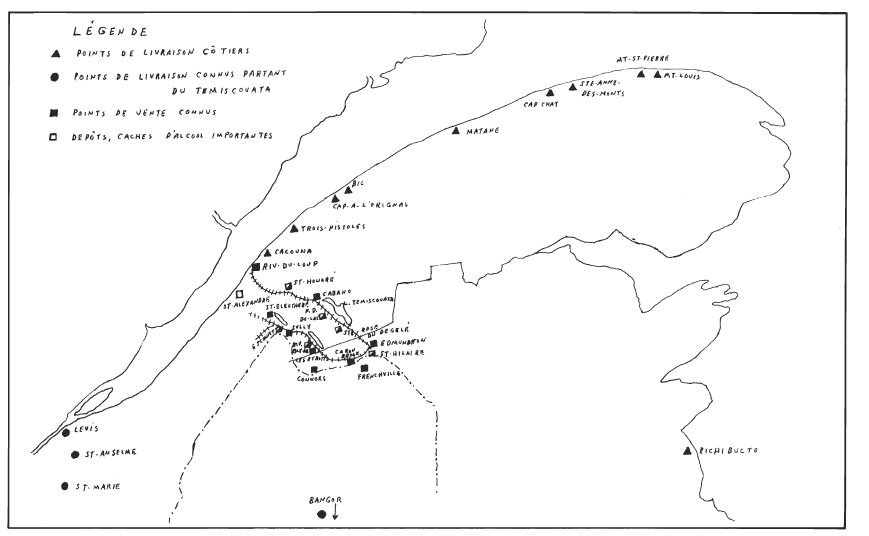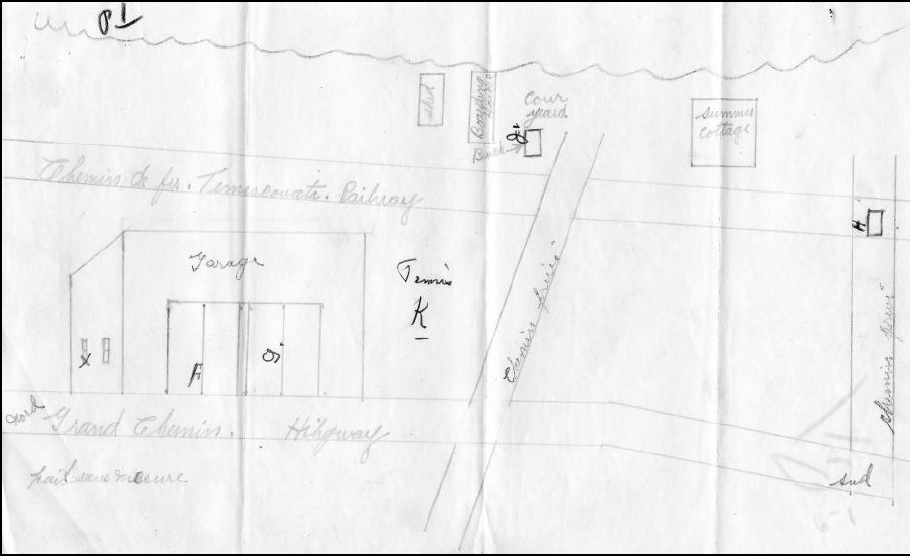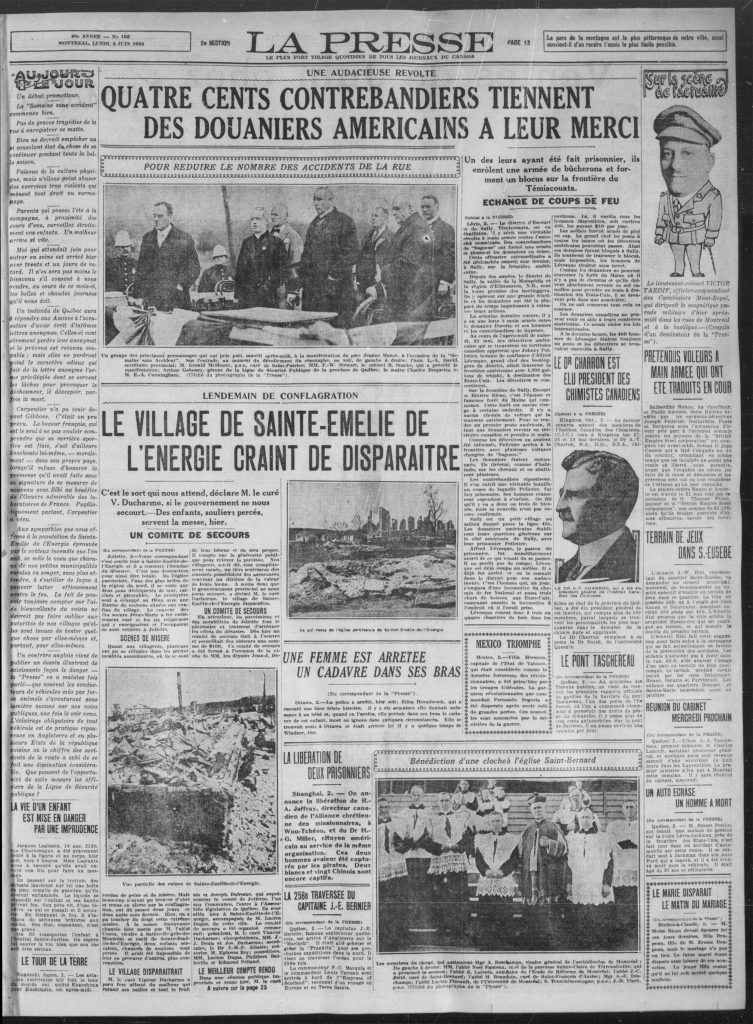His smuggling ring
The smuggling network that Alfred Lévesque set up in the early 1920s was initially based on the traffic of moonshine. Later he brought in better quality alcohol by schooner from the islands of Saint-Pierre and Miquelon, a small French territory off the coast of Newfoundland that was not affected by prohibition. One such vessel was the schooner Robertson. Alfred Lévesque was then able to offer whisky, champagne, rum and wine to his distributors! He also had access to Liquor Commission labels which facilitated the sale of his merchandise. These labels probably came from his association with the Bronfman brothers.
Alfred’s network expanded rapidly as can be seen on this map of loading and delivery sites:

Alfred Lévesque’s smuggling network in the 1920s. Source: “La région du Transcontinental à l’heure de la prohibition,” article published in the Revue d’histoire du Bas-Saint-Laurent, October-December 1983.
With Alfred’s illegal business growing, by the late 1920s he came to own considerable facilities in Notre-Dame-du-Lac.

Sketch by Constable J. N. Ménard of Rivière-du-Loup illustrating the facilities at Alfred Lévesque’s summer home in Notre-Dame-du-Lac at the time of a search conducted by the police force in October 1932. Source: National Library and Archives of Québec, Rimouski.
The smuggling ring set up by Alfred Lévesque and Antonio Graveline proved to be very effective. In 1932, for example, they managed to ship at least 5,000 gallons of contraband alcohol to the United States, not to mention the alcohol they were able to sell in Canada. The scale of Alfred’s activities made him one of the most notorious smugglers in Eastern Canada.
Our smugglers had the support of many influential people. Police officers, lawyers, judges and even ministers were corrupt. This explains why there were so many arrests but so few convictions.
Alfred did not hesitate to use all possible means to achieve his ends, as shown by the extensive media coverage he received. An article in La Presse on June 2, 1934 described Alfred as a man of incredible daring. “This is the man who one day captured a National Railroad locomotive, drove three wagons of liquor into the United States and then returned the locomotive to the place from where he had taken it.”


